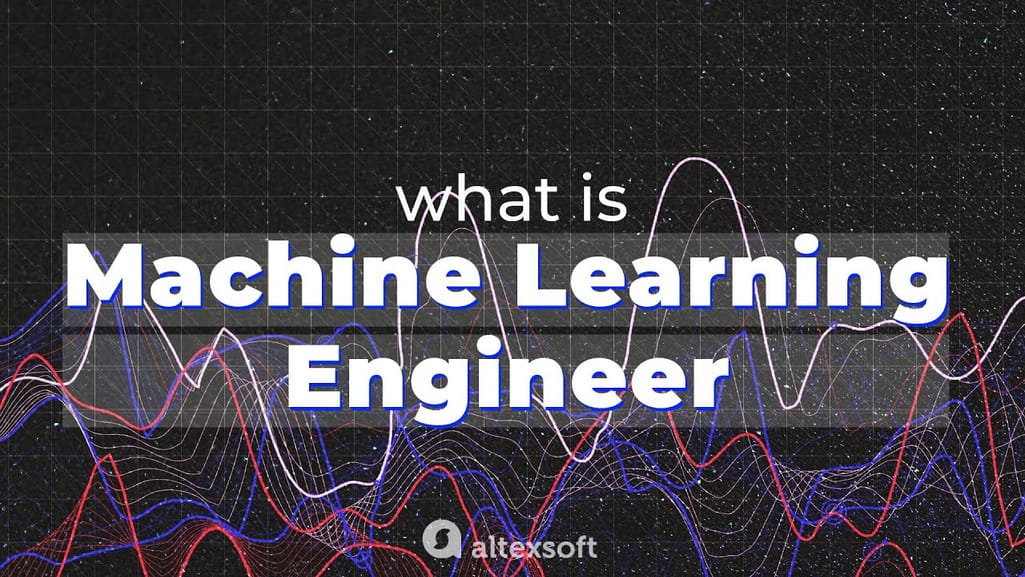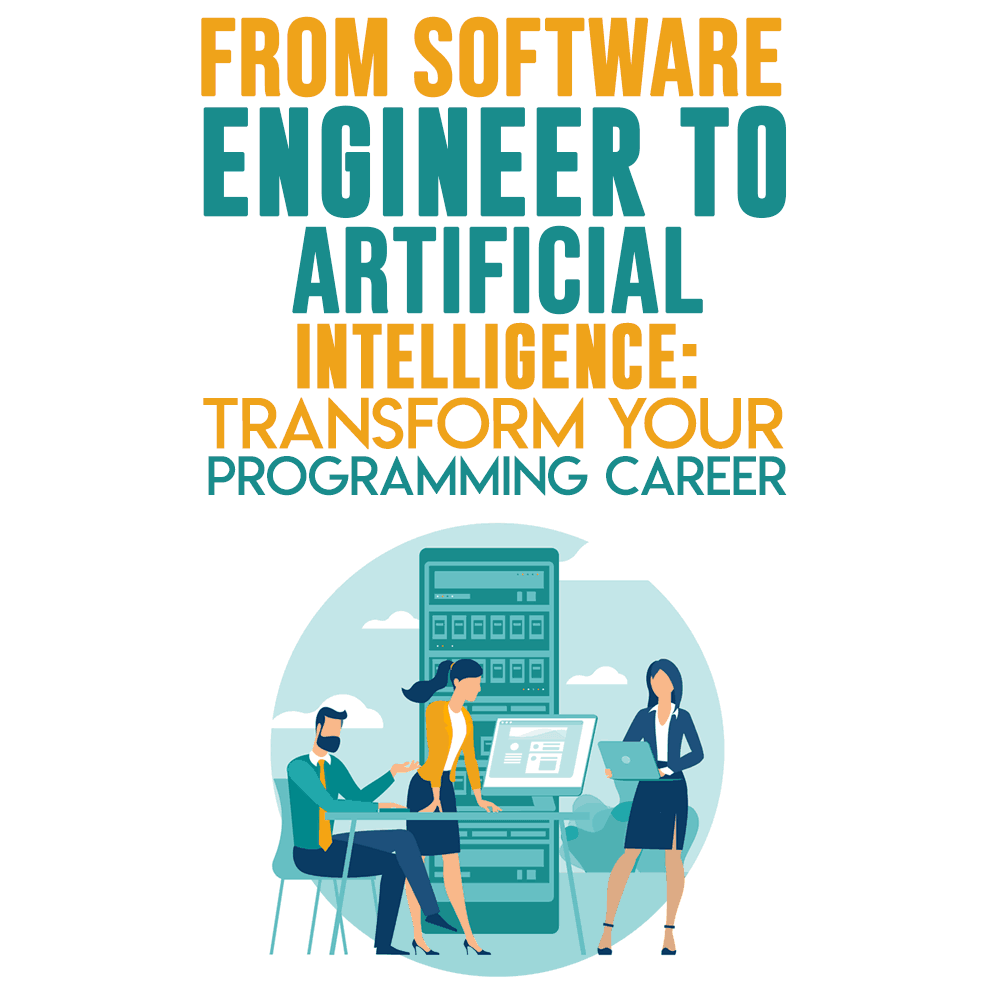All Categories
Featured
Table of Contents
- – Everything about How To Become A Machine Learn...
- – Not known Facts About Leverage Machine Learnin...
- – What Does Fundamentals Of Machine Learning Fo...
- – Aws Machine Learning Engineer Nanodegree - Qu...
- – An Unbiased View of 7-step Guide To Become A...
- – The smart Trick of Software Engineering In T...
You most likely understand Santiago from his Twitter. On Twitter, every day, he shares a great deal of functional things regarding machine learning. Alexey: Prior to we go right into our primary subject of relocating from software engineering to device discovering, perhaps we can begin with your history.
I began as a software developer. I went to college, got a computer technology degree, and I started developing software application. I assume it was 2015 when I decided to go for a Master's in computer system science. Back after that, I had no idea about machine discovering. I didn't have any kind of passion in it.
I know you've been utilizing the term "transitioning from software engineering to device learning". I such as the term "including to my capability the equipment knowing abilities" extra since I believe if you're a software program engineer, you are already supplying a lot of value. By integrating artificial intelligence now, you're increasing the impact that you can have on the industry.
Alexey: This comes back to one of your tweets or perhaps it was from your training course when you contrast 2 techniques to discovering. In this instance, it was some trouble from Kaggle concerning this Titanic dataset, and you simply discover how to fix this trouble making use of a specific tool, like choice trees from SciKit Learn.
Everything about How To Become A Machine Learning Engineer Without ...
You first find out mathematics, or linear algebra, calculus. When you know the mathematics, you go to device knowing concept and you find out the concept.
If I have an electrical outlet right here that I require replacing, I do not desire to most likely to college, invest 4 years recognizing the math behind electrical energy and the physics and all of that, simply to alter an electrical outlet. I would certainly instead begin with the electrical outlet and find a YouTube video clip that assists me experience the trouble.
Bad example. You get the concept? (27:22) Santiago: I really like the idea of starting with a trouble, trying to toss out what I understand as much as that trouble and comprehend why it doesn't function. After that get hold of the tools that I need to address that trouble and begin excavating deeper and much deeper and deeper from that factor on.
Alexey: Possibly we can talk a bit concerning learning resources. You stated in Kaggle there is an intro tutorial, where you can obtain and discover just how to make decision trees.
The only requirement for that program is that you recognize a little bit of Python. If you go to my account, the tweet that's going to be on the top, the one that states "pinned tweet".
Not known Facts About Leverage Machine Learning For Software Development - Gap

Even if you're not a designer, you can start with Python and work your means to more equipment discovering. This roadmap is concentrated on Coursera, which is a platform that I truly, truly like. You can investigate all of the courses free of charge or you can spend for the Coursera subscription to obtain certifications if you want to.
Alexey: This comes back to one of your tweets or maybe it was from your training course when you contrast 2 methods to learning. In this instance, it was some issue from Kaggle about this Titanic dataset, and you simply learn how to resolve this issue using a specific device, like choice trees from SciKit Learn.

You first find out math, or linear algebra, calculus. When you recognize the mathematics, you go to machine knowing theory and you find out the concept.
If I have an electric outlet right here that I need changing, I don't want to go to college, invest four years understanding the mathematics behind electrical energy and the physics and all of that, simply to change an electrical outlet. I prefer to start with the electrical outlet and locate a YouTube video clip that assists me experience the trouble.
Santiago: I really like the concept of beginning with an issue, attempting to throw out what I know up to that problem and understand why it does not function. Grab the tools that I require to address that issue and start digging deeper and deeper and deeper from that factor on.
That's what I generally advise. Alexey: Perhaps we can talk a bit regarding finding out resources. You stated in Kaggle there is an introduction tutorial, where you can get and discover exactly how to make choice trees. At the beginning, prior to we started this interview, you pointed out a couple of books as well.
What Does Fundamentals Of Machine Learning For Software Engineers Mean?
The only requirement for that program is that you understand a little bit of Python. If you go to my profile, the tweet that's going to be on the top, the one that claims "pinned tweet".
Even if you're not a developer, you can begin with Python and function your means to even more device understanding. This roadmap is concentrated on Coursera, which is a system that I truly, really like. You can investigate every one of the programs free of cost or you can spend for the Coursera subscription to obtain certificates if you want to.
Aws Machine Learning Engineer Nanodegree - Questions
Alexey: This comes back to one of your tweets or possibly it was from your training course when you compare 2 techniques to knowing. In this instance, it was some issue from Kaggle concerning this Titanic dataset, and you just discover exactly how to resolve this trouble utilizing a specific device, like choice trees from SciKit Learn.

You first find out mathematics, or direct algebra, calculus. When you understand the math, you go to device learning theory and you learn the concept. Four years later, you finally come to applications, "Okay, how do I use all these four years of math to fix this Titanic problem?" ? So in the former, you sort of conserve yourself time, I think.
If I have an electric outlet below that I need changing, I don't desire to go to university, invest four years understanding the mathematics behind electrical power and the physics and all of that, just to transform an outlet. I prefer to begin with the electrical outlet and discover a YouTube video that assists me go via the issue.
Bad example. However you understand, right? (27:22) Santiago: I really like the idea of beginning with a trouble, trying to throw away what I understand approximately that issue and understand why it doesn't work. Get hold of the tools that I require to fix that problem and start digging deeper and deeper and deeper from that point on.
To ensure that's what I normally recommend. Alexey: Maybe we can speak a little bit regarding discovering resources. You mentioned in Kaggle there is an introduction tutorial, where you can obtain and find out exactly how to make decision trees. At the start, prior to we started this interview, you mentioned a pair of publications.
An Unbiased View of 7-step Guide To Become A Machine Learning Engineer In ...
The only need for that program is that you know a little bit of Python. If you go to my account, the tweet that's going to be on the top, the one that claims "pinned tweet".
Also if you're not a designer, you can start with Python and work your means to more artificial intelligence. This roadmap is concentrated on Coursera, which is a system that I actually, really like. You can examine all of the programs free of charge or you can pay for the Coursera membership to get certificates if you want to.
That's what I would certainly do. Alexey: This comes back to one of your tweets or perhaps it was from your course when you compare 2 techniques to knowing. One method is the issue based method, which you just spoke about. You locate an issue. In this instance, it was some issue from Kaggle about this Titanic dataset, and you just find out just how to resolve this problem making use of a certain device, like choice trees from SciKit Learn.
You first learn mathematics, or straight algebra, calculus. When you recognize the math, you go to machine knowing concept and you discover the concept.
The smart Trick of Software Engineering In The Age Of Ai That Nobody is Discussing
If I have an electric outlet below that I require changing, I don't intend to go to college, spend 4 years understanding the math behind electricity and the physics and all of that, simply to alter an outlet. I would instead begin with the electrical outlet and locate a YouTube video that aids me experience the trouble.
Santiago: I really like the concept of starting with a problem, trying to throw out what I know up to that trouble and comprehend why it doesn't function. Get the devices that I require to solve that problem and begin excavating deeper and deeper and much deeper from that factor on.

That's what I generally advise. Alexey: Perhaps we can speak a bit concerning learning sources. You mentioned in Kaggle there is an introduction tutorial, where you can get and discover exactly how to make decision trees. At the beginning, before we began this meeting, you stated a number of publications too.
The only need for that training course is that you recognize a little bit of Python. If you go to my profile, the tweet that's going to be on the top, the one that says "pinned tweet".
Also if you're not a developer, you can start with Python and function your means to more artificial intelligence. This roadmap is concentrated on Coursera, which is a platform that I truly, really like. You can investigate all of the training courses absolutely free or you can pay for the Coursera subscription to get certifications if you intend to.
Table of Contents
- – Everything about How To Become A Machine Learn...
- – Not known Facts About Leverage Machine Learnin...
- – What Does Fundamentals Of Machine Learning Fo...
- – Aws Machine Learning Engineer Nanodegree - Qu...
- – An Unbiased View of 7-step Guide To Become A...
- – The smart Trick of Software Engineering In T...
Latest Posts
The Best Courses For Full-stack Developer Interview Preparation
How To Practice Coding Interviews For Free – Best Resources
The Complete Software Engineer Interview Cheat Sheet – Tips & Strategies
More
Latest Posts
The Best Courses For Full-stack Developer Interview Preparation
How To Practice Coding Interviews For Free – Best Resources
The Complete Software Engineer Interview Cheat Sheet – Tips & Strategies